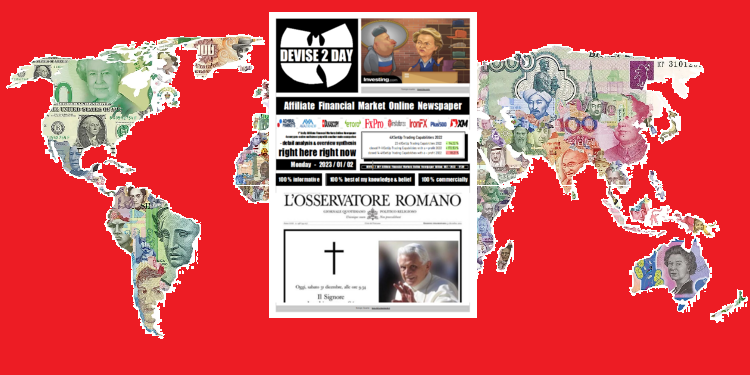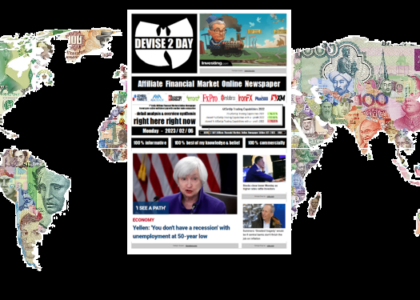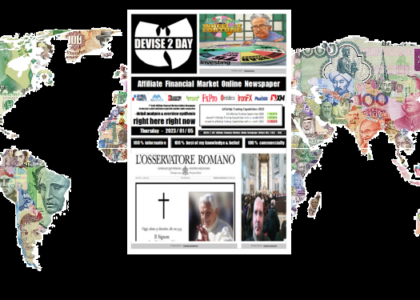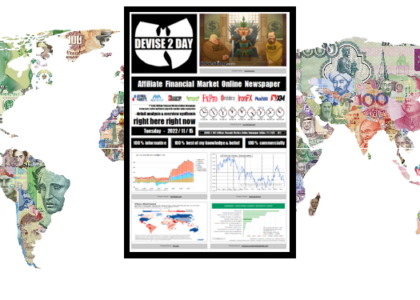
2023/01/02 (139.002) Technical Analysis – XETR-RWE & EUREX-FDAX1!
European STOXX 600 Traded Higher On 1st Trading Day 2023
Although The DAX40 Lagged Begind, I Formulate A Long 4XSetUp Today
– Because He Could Trade On Historically Important Price Action Areas 2023!
DAX Forecast 2023 – How To Position Yourself In 2023
Here in the DEVISE 2 DAY Affiliate Financial Market Online Newspaper you will receive news and/or interesting facts about the Dax in the course of 2023.
Once a week I will formulate a Technical Analysis 4XSetUp with a concrete trading capability. And today I’m going to start with it. In this Technical Analysis 4XSetUp you will find out everything you need to know about to trading (bu/sell or do nothing) the DAX 2023.
Since 10 more stocks were included in the German stock index DAX last year, a lot has happened in the real economy and consequently also on the stock exchange in Germany. From an investor’s point of view, however, it is far more decisive where the price barometer will actually be at the end of the year. Admittedly, DAX forecasts that state a specific point where the index will be listed on New Year’s Eve can hardly be regarded as serious. Nevertheless, we can explain to you specifically which two scenarios for the possible price development are by far the most likely.
In its 33-year history, the German Stock Index (DAX) has developed into the leading price barometer for the stock market in Germany. The DAX is not as prominent worldwide as the Dow Jones or S&P 500 index. Nevertheless, countless international financial media report on the development of the German index every trading day. After a very bumpy development in the spring, the index gained a lot of attention and will continue to attract it in the long term. However, the decisive question will remain in the future as to what scores the DAX will achieve.
Important Indices Of The DAX Family
The MDAX includes the shares of the 50 companies in classic sectors that follow the values listed in the DAX in terms of market capitalization and stock exchange turnover. The index thus reflects the price development of shares in medium-sized German companies or companies that are mainly active in Germany, so-called mid caps.
The SDAX includes the 70 largest companies in the classic sectors below the MDAX values in terms of market capitalization and stock exchange turnover. The 30 largest companies in the German technology sector in terms of market capitalization and stock exchange turnover are listed in the TecDAX.
Leading International Indices
The importance that the DAX has for the German stock market can be attributed to the Dow Jones index in the US. Similar to the DAX, the index reflects the price development of the most important US stocks. The leading index of the Japanese stock market is the Nikkei Index, which shows the performance of the 225 most important stocks listed on the Tokyo Stock Exchange. The 50 largest listed companies from the countries of the euro zone are summarized in the EURO STOXX index. The index is therefore considered an important indicator for the development of the European stock market.
European Bourses Have Worst Year Since 2018 While German 10-Year Bund Yield Set To Close Year At 2.5%
European equity markets closed lower in the last trading session of 2022, with the benchmark Stoxx 600 suffering a 12.8% yearly loss, the biggest since 2018, after a 22.2% jump a year earlier. Domestically, the German DAX also tumbled more than 12%, nearly reversing a 16% surge in 2021. Surging covid cases in China added further pressure to an already challenging 2023, as a recession is looming, inflation remains elevated, the ECB is set to continue to raise interest rates and the war in Ukraine is far from over, leaving the energy crisis unresolved.
Germany’s benchmark 10-year Bund yield was at 2.5% at the end of 2022, close to its highest level since July of 2011, and up from about -0.1% at the beginning of the year amid fears of a severe global recession as major central banks are set to tighten monetary policy further in 2023. Yields have been also supported by expectations of increasing government funding and falling excess liquidity, as Germany’s government boosts public spending to fight the adverse impact of the energy crisis. The European Central Bank pledged further rate hikes to fight inflation and announced it would start reducing its €5 trillion bond holdings from March, with President Lagarde saying the central bank would need to deliver “significant” rate increases at a steady pace. Elsewhere, the Fed said it would continue its monetary policy tightening campaign, even if data points to a weakening economy, while the Bank of Japan said it would loosen some of its strict
controls over long-term interest rates.
Germany Manufacturing PMI Revised Slightly Lower, May Be That`s Why European Stocks Start 2023 On A Positive Note
The S&P Global/BME Germany Manufacturing PMI was revised lower to 47.1 in December of 2022 from a preliminary of 47.4. The reading pointed to a sixth consecutive month of falling factory activity although the smallest decline in three months, helped by a further reduction in supply chain frictions. Better material availability also helped to ease output contraction and average lead times on inputs were reduced for a second month. On the other hand, new orders were down for the ninth month in a row, reflecting heightened levels of uncertainty and high stocks among customers. On the price front, input cost inflation fell markedly but remained well above its pre-pandemic average, owing in large part to high energy prices. Meanwhile, expectations towards future output, with confidence picking up further from October’s recent low to the highest since last March.
European shares rose nearly 1% in the first trading session of 2023 on Monday after suffering the worst year since 2018, led by gains in technology and energy stocks. Investors looked ahead to fresh catalysts for 2023, though trading volume is expected to stay subdued as several major markets remain shut for New Year holidays; while digested final PMI data showing the Eurozone’s manufacturing downturn eased in December. Meanwhile, German finance minister Christian Lindner told Bild newspaper he expected inflation in Europe’s biggest economy to drop to 7% this year and to continue falling in 2024 and beyond, but warned about stubbornly high energy prices. European shares have tumbled nearly 13% last year due to geopolitical tensions, fears of a recession and prospects of rising interest rates amid stubbornly high inflation.
good morning, good day, and/or good night
at whatever time, wherever you are !
right here right now :


















